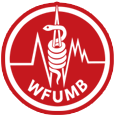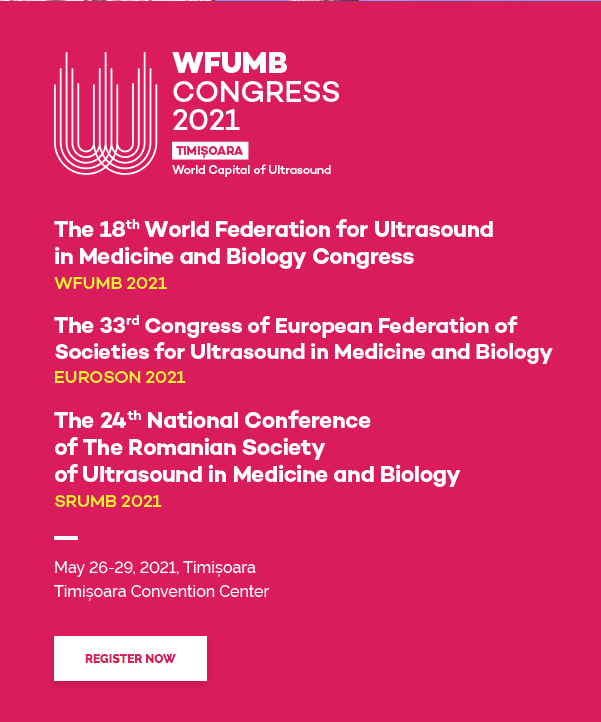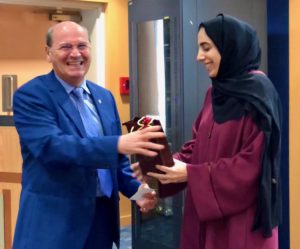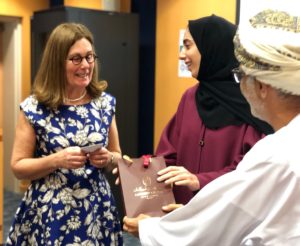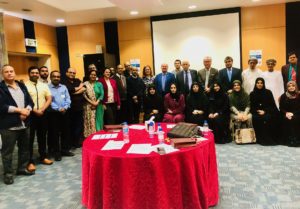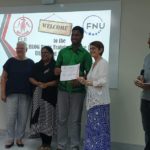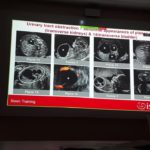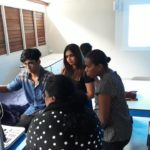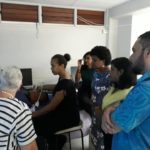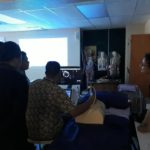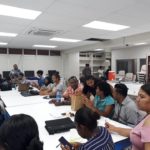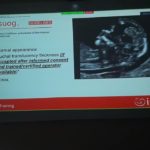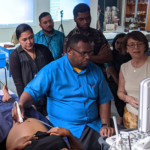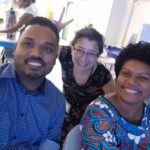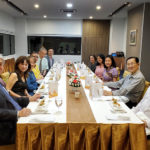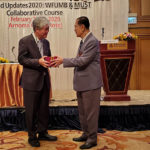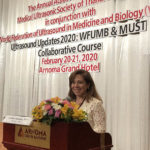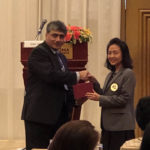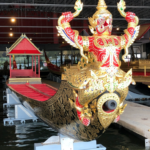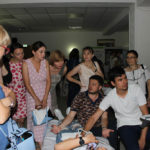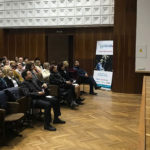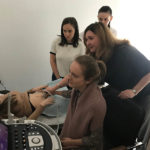

![]()
Thank you always for your time and efforts for WFUMB. We are passing through an extremely difficult time due to COVID-19 and I hope all of you stay safe and healthy.
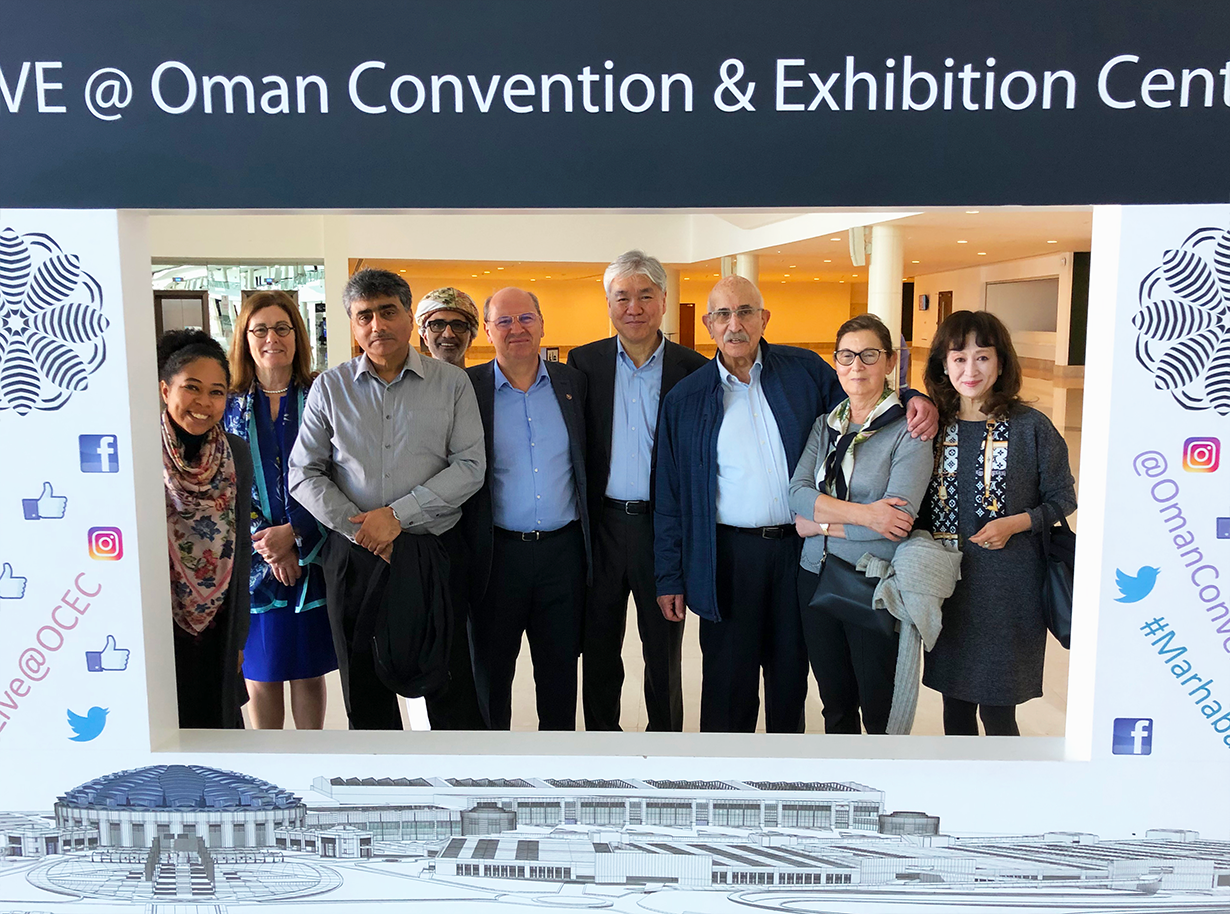
After the WFUMB 2019 Congress in Melbourne, we had two WFUMB business meetings as usual. In January 2020 we had a site-visit meeting for 2023 WFUMB congress in Muscat Oman in conjunction with an educational course during the annual congress of OSUM (Omanese Society of Ultrasound in Medicine). In February 2020, we had an executive bureau meeting with an educational course in Bangkok Thailand in conjunction with the annual congress of MUST (Medical Ultrasound Society of Thailand). Thereafter, almost all scheduled scientific and business meetings of WFUMB have been canceled and replaced by online meetings due to the COVID crisis.

Seung H Kim, Cristina Chammas & Dr Kittipong Vairojanavong in Bangkok
I am sorry that we had to cancel the Seoul meeting which was WFUMB-Family-Get-Together Meeting in conjunction with the WFUMB executive bureau and administrative council meetings during the period of the annual congress of KSUM (Korean Society of Ultrasound in Medicine). The Bergen meeting including the WFUMB education committee meeting during the EFSUMB Congress period was also canceled. 2020 AFSUMB congress in Beijing in August, when we planned to have an educational course and executive bureau meeting, was also canceled and rescheduled to September 2021. I hope COVID-19 calms down soon and we may be able to schedule offline meetings again.
During these difficult times, however, WFUMB has to continue its business online. We will have online business meetings until offline physical meetings are possible. We had online executive and administrative council meetings on the 7th and 8th of May. These meetings went quite well and efficiently. Many more meetings will be held online and we need to prepare for them.
I wish all WFUMB family members stay safe and healthy. This, too, shall pass away.




Ultrasound Expectations during COVID-19
in a London Teaching Hospital
Paul Sidhu

Jane Clarke (Superintendent of Ultrasound) and Dorothy Speddings (Senior Sonographer) posing in their PPE prior to attending to a patient.
During the pandemic that has engulfed the world, and markedly affected the large inner London Teaching Hospitals, the ultrasound service has been called into play to provide a vital service to the patients and to the management of the severely ill patients on the Intensive Care Units.
The need to maintain a ‘COVID-19’ free Ultrasound Department, and offering crucial imaging, a full portable ultrasound service to the COVID-19 wards was implemented at King’s Hospital, London. The Ultrasound Department at King’s College Hospital is a sonographer-based service and the sonographers led on the service to the COVID-19 wards. This meant the establishment of new protocols for the particular needs of these patients, limiting the time of the scans, and the absolute need to focus on the clinical question and target the potential abnormality. The scans were largely related to renal dysfunction, abnormal liver function biochemistry, and attention paid to the potential for vascular anomalies. Two sonographers always carried out the scans to assist with donning and doffing PPE, operating the machines, using dedicated ultrasound machines placed on each of the Intensive Care Units. The pandemic is now slowly abating in London, with fewer ward-based patients, but this was after eight weeks of a 24/7 ultrasound service to the wards provided by a small band of dedicated sonographers here at King’s College Hospital in London.
They helped the hospital to discharge over 2000 COVID-19 recovered patients over this period of time.
Welcome to the June 2020 edition of ECHOES


Graduate Medical Experiences in Ultrasound Training During Covid-19
Noah Furr, MD1
Yusef Sayeed, MD, MPH, MEng2
1Resident Physician, United States Air Force, Eglin Air Force Base, Department of Family Medicine, Florida
2Assistant Professor, Director of Pain Medicine and Functional Rehabilitation Eglin Air Force Base, Intrepid Spirit Center, Assistant Professor, Department of Physical Medicine and Rehabilitation, Department of Family Medicine, Uniformed Services University of the Health Sciences, Bethesda, MD
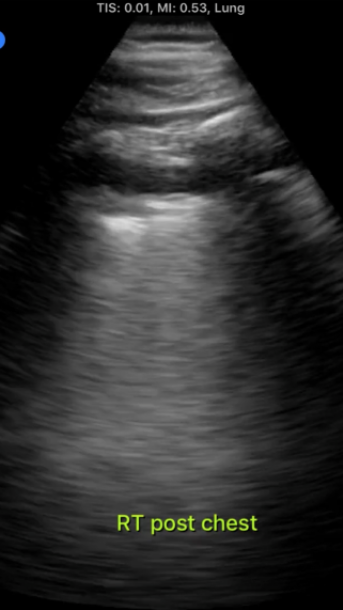
Figure 1: Right posterior lung sonogram from a Covid-19 positive patient
Correspondence:
Dr. Noah Furr
96MDG/AMDS SGPF(IWC)
Eglin AFB, FL 32542
email: noah.furr@gmail.com
Financial disclosure statements have been obtained, and no conflicts of interest have been reported by the authors or by any individuals in control of the content of this article.
These views do not represent the views of the United States Air Force or the United States Department of Defense.
Caring for patients during the COVID-19 pandemic has brought the adage of EMS to the rest of medicine: “improvise, adapt, overcome.” Physician clinics have reduced patient contact or have blossomed in telemedicine adoption for the care and protection of the sick. Among these adaptations, it is apparent that lung point-of-care ultrasound (POCUS) is changing the practice of medicine during the acute and subacute phases of the pandemic disease. POCUS is being practiced from Emergency Medicine triage rooms to urgent care centers, medical surgical floors and even to the battlefield. POCUS in this day and age has been plentiful and recurrently validated for its utility and feasibility in caring for not just COVID-19 patients for lung and venous thromboembolism, but also for common and non-pandemic pathologies, such as pediatric lobar pneumonia or improvement from diuresis in heart failure exacerbations.
As a resident physician, graduate medical education has also had to overcome the obstacles of social distancing and reduced general patient loads for active learning opportunities or aiding in the effort of acute/critical care of those affected by COVID-19, to say the least. Virtual didactics and transforming continuity clinics to include outdoor urgent care visits to telemedicine, but for the face-to-face appointments or ER consults for inpatient management, lung ultrasounds have helped change management and confirm clinical progression for those with COVID-19, bacterial pneumonia, cardiogenic pulmonary edema, and obstructive airway disease, to name a few.
With these extraordinary times, the global ultrasound community is fighting as a collective front. With information sharing, such as lung ultrasound findings from colleagues in China and Italy, as have been published, as well as webinars from the global community for mass and widespread training in lung ultrasound and safety and cleaning protocols, we continue to learn from one another in how to care for and to safely continue to touch patients, utilizing all tools at our disposal.
Dr. Noah Furr (Family Medicine resident):
Currently, I am in charge of resident didactics as one of three chief residents in our program. Due to social distancing orders, we have transitioned formal ultrasound didactics entirely to distance learning. We have been transferring our energies to curate online videos, podcasts, e-books, and pre-recorded lectures for currency and learning in addition to on-the-job training, including telehealth/telemedicine and scheduled webinars via ZOOM or other platforms. There is still a hope we can eventually return to learning face-to-face and have hands-on workshops, but likely things will never look the same. Certainly there has been time for self-directed study and learning. Face-to-face encounters have been reduced, as medically necessary, making graduate medical education and non-COVID patient care challenging. However, during this moment our attendings have continued individual teaching on a case-by-case practice, based on clinical necessity. The drive to absorb as much as I can during each clinical encounter with my faculty has only increased despite the fewer patients seen face-to-face. Placing a probe on patients that come into the Emergency Department when we are called on to evaluate for admission, has become much more commonplace. This helps to give us an idea regarding the patient’s exposure, prognosis, and understand possible risks of complications. Learning how to terminally clean devices and don/doff PPE has been its own chapter of learning. This has prepared me to provide care moving into the future once I have graduated from residency training.
Dr. Yusef Sayeed (Faculty)
From the educator’s perspective, teaching residents has become much more challenging due to the reduction in group learning dynamics and education. Much of the current education comes at the bedside, which is ripe for POCUS education. However, teaching young clinicians the basics has been difficult due to social distancing. Giving residents the capability to scan at home with their ultrasound devices is the capability we have sought out. We have been able to accomplish this in some part with our current equipment. We hope that this will allow residents to pick up those skills that the current reduction in group education has diminished. Making use of “teachable” moments has been critical in today’s practice environment. Moving forward clinical education is bound to change, conferences, where hands on workshops were the mainstay, may never look the same. Instead, education may primarily rely on small groups or perhaps even individual teaching. Providing new ways to educate will be the most responsible way forward, especially for our next generation of physicians and providers. Learning through webinars, podcasts, and other digital delivery formats will be more the rule, than the exception. Although this will be a drastic change it is not new to the field of medicine where we are routinely challenged to learn new creative ways to deliver quality treatments. My hope is that as the clinical utility of ultrasound grows the education will continue to follow especially in our most recent graduates.


AFSUMB Report
Iwaki Akiyama
Because of COVID-19 Pandemic, all the congress and workshops in Asia which had been scheduled in 2020 were postponed as follows;
- AFSUMB Congress in Beijing, China was postponed to September 9-12, 2021
- AFSUMB Workshop in Kathmandu, Nepal was postponed to 2021
- AFSUMB Workshop in Ulaanbaatar, Mongolia was postponed.
The bid for WFUMB 2025 is proposed by JSUM as follows;
Site: Kyoto International Conference Center (ICC Kyoto)
20 rooms, (including 15 rooms of JSUM), Exhibition space up to 5,000m2
Total number of capacities (seats): approx. 9,000
Anticipated Attendance: 7,000 (including 5,000 attendance of JSUM Domestic Conference)
Choice of congress sites under consideration, together with date(s):
Kyoto International Conference Center, May 22-25, 2025
The total amount of expenditures is estimated up to 277 million JPY (2.55 million USD).
The affiliated organizations of AFSUMB are supporting JSUM to host WFUMB 2025.
Latest WFUMB Webinars
The webinar teams have been busy over the last few months with three webinar events conducted.

Webinar: Carotid Doppler: IMT, Stenosis and Cardiovascular Disease Impact
took place in February 2020 and was a great success. Presentations can be found form the above link.

Webinar: Interventional Ultrasound (INVUS) – refresher and up-to-date information followed in April, again with great success.



FLAUS Report
Jorge Rabat
FLAUS is constituted by 14 Ultrasound Societies that represent their respective countries: Argentina (SAUMB), Bolivia (ABUM), Brazil (CBR), Chile (SOCHUMB), Colombia (ASOCOUM), Costa Rica (ASCUME), Ecuador (SEUM ), Guatemala (ASOGU), Mexico (FMACU), Paraguay (SPE), Peru (SPUMB), Dominican Republic (SDSONO), Salvador (ASOGOES) and Venezuela (AVUM).
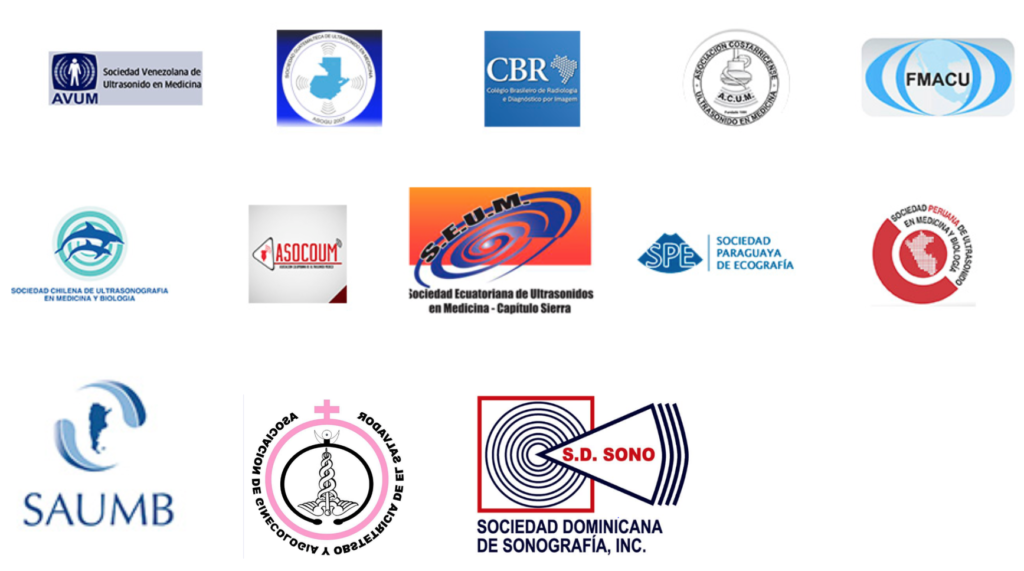
The COVID-19 pandemic has surprised us all, including governments and of course Science. Academic events have been suspended and very few scientific societies have developed online courses. FLAUS has supported several Scientific Congresses this year, which have been suspended by COVID-19.
Recently, confinement has given rise to a new form of scientific communication: online courses and conferences, promoted by scientific societies and mainly by industry, where many scientific topics, some related to the pandemic or its effects, are dictated from home of each teacher. Many FLAUS teachers and their Societies have participated in these events. We are learning to live with this new scourge.
We will present a summary of the activities of our Societies and FLAUS, and also of their teachers individually.
SUMMARY
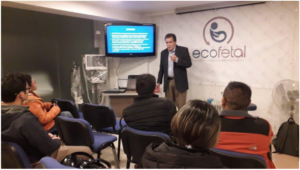
The Bolivian Ultrasound Association (ABUM) conducted a fetal ultrasound course on March 12 with Dr. Erich Rada.
Argentine Society of Ultrasound in Medicine and Biology ( SAUMB) has translated the ISOUG practical guides for its affiliates into Spanish. SAUMB is giving these courses:
- Ultrasound in airway, lung and thorax.
- Infertility Ultrasound Course (1st edition)
- Breast Ultrasound Course
- Color Eco-Doppler Course of Venous Diseases of MM II (1st edition).
SAUMB published hygiene guidelines on COVID 19 on its website.

On May 13, the Brazilian College of Radiology held a webinar on Mammography and Breast Ultrasound Report. CBR and SBACV publish Consensus on Duplex Scan (Color Doppler Ultrasound) for Assessment of Chronic Venous Disease of the Lower Limbs.
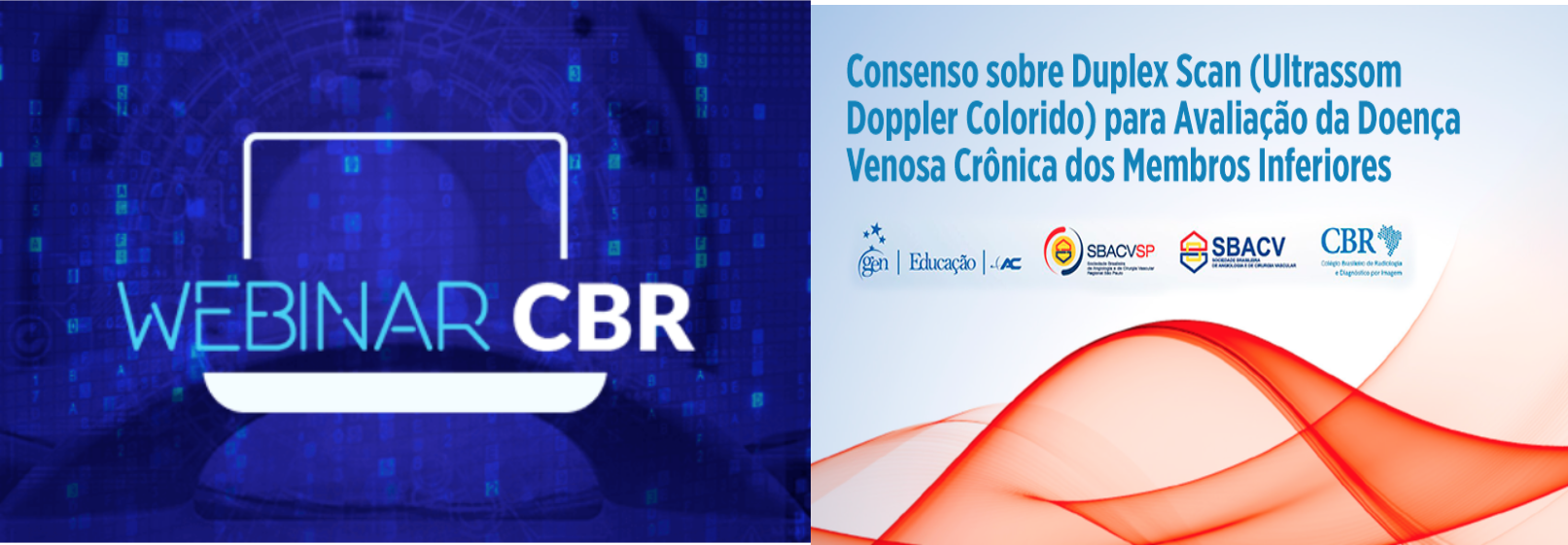
On May 19, a workshop was held where our elected President, Dr. María Cristina Chammas, represented us in a masterly way, with the theme: New ultrasonographic tools in the diagnosis of fatty liver disease.
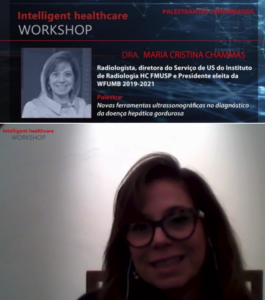
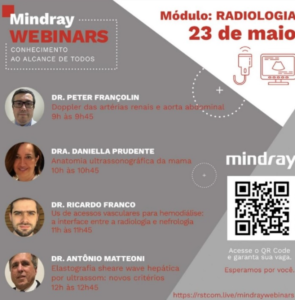 On May 23, a Course was held where we were represented by Antonio Matteoni and Peter Francolin, our President and Secretary of FLAUS.
On May 23, a Course was held where we were represented by Antonio Matteoni and Peter Francolin, our President and Secretary of FLAUS.
The Dominican Society of Sonography scheduled a Pediatric Ultrasound Course for April 25 and 26, dictated by Dr Pedro Unshelm, but was suspended by COVID-19. They promoted some foreign webinars among their members.
The Venezuelan Society of Ultrasound in Medicine (AVUM) made a Consensus COVID-19 in pregnant women.
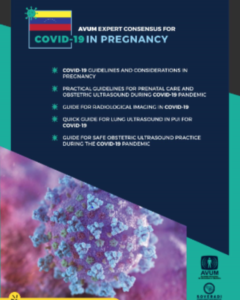
Dr. Leandro Fernández, past President of FLAUS and WFUMB Director of Education for Latin America, scheduled three Doppler master courses in March, but due to 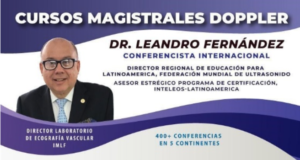 COVID-19 he was only able to teach the cranial and extracranial courses and the Doppler courses for liver and kidney.
COVID-19 he was only able to teach the cranial and extracranial courses and the Doppler courses for liver and kidney.
AVUM together with FUNDASOG endorsed a virtual classroom on Abdominal Ultrasound for Obstetricians, dictated by Dr. Miguel Angel Jiménez Taboada, Past-president of FLAUS.
On May 22, Dr Leandro Fernandez told us about Infection Control and Prevention of COVID-19 in Ultrasound.
The Paraguayan Society of Ultrasound carried out a Refresher course on Ultrasound during COVID-19.
FLAUS starts on May 27 a series of Conferences dictated by its Board of Directors, starting Dr Peter Francolin with Doppler of lower members. In the next ECHOES I will talk about the other topics. FLAUS is currently in the process of renewing its website to make it more interactive. FLAUS is also translating AIUM parameters into Spanish and Portuguese.
We are collecting information on the experiences of the sonographers and COVID-19 and we will present them in the next ECHOES.
FLAUS please asks everyone to STAY SAFE.


EFSUMB Report
Paul Sidhu
The present pandemic has severely curtailed the activities of EFSUMB, with cancellation of all the EUROSON Schools scheduled and also the main annual EUROSON Conference in Bergen, Norway. The cancellation of the Bergen meeting was particularly difficult as the planning was advanced and the scientific program in place, with a large number of abstracts submitted. The logistics of transportation has evolved and it is now clearly apparent that cancellation was the correct decision. There is active discussion surrounding the next combined EFSUMB/WFUMB meeting schedules in Timisoara, Rumania, with the possibility of incorporating some of the scientific presentations. The earliest remaining scheduled physical meeting in the EUROSON CEUS Schools agenda is in Munich in October, which we hope will proceed uninterrupted.
The whole concept of physical meetings may alter, changes already starting to be seen with many major conferences; a virtual attendance solution may be the way forward but will need much input from the technological aspects to make this a viable option and useful for the audience.
With the current COVID-19 ultrasound debate, effort to establish the role of ultrasound in the management of these patients has resulted in a speedy development of protocols, ultrasound appearances and clinical outcomes related to findings in the lungs. EFSUMB has organised and delivered two webinar seminars on the topic of ultrasound in COVID-19 patients, both well attended and well received by the audiences. The latest was broadcast on the 6th May, featuring two renowned experts in the field, demonstrating the technique and the medical background to the rational of using ultrasound in this manner. Many studies are rapidly addressing this issue, but it will be some time before the true role of ultrasound is established in Covid-19 lung disease. The webinars are available to be viewed on the EFSUMB website.
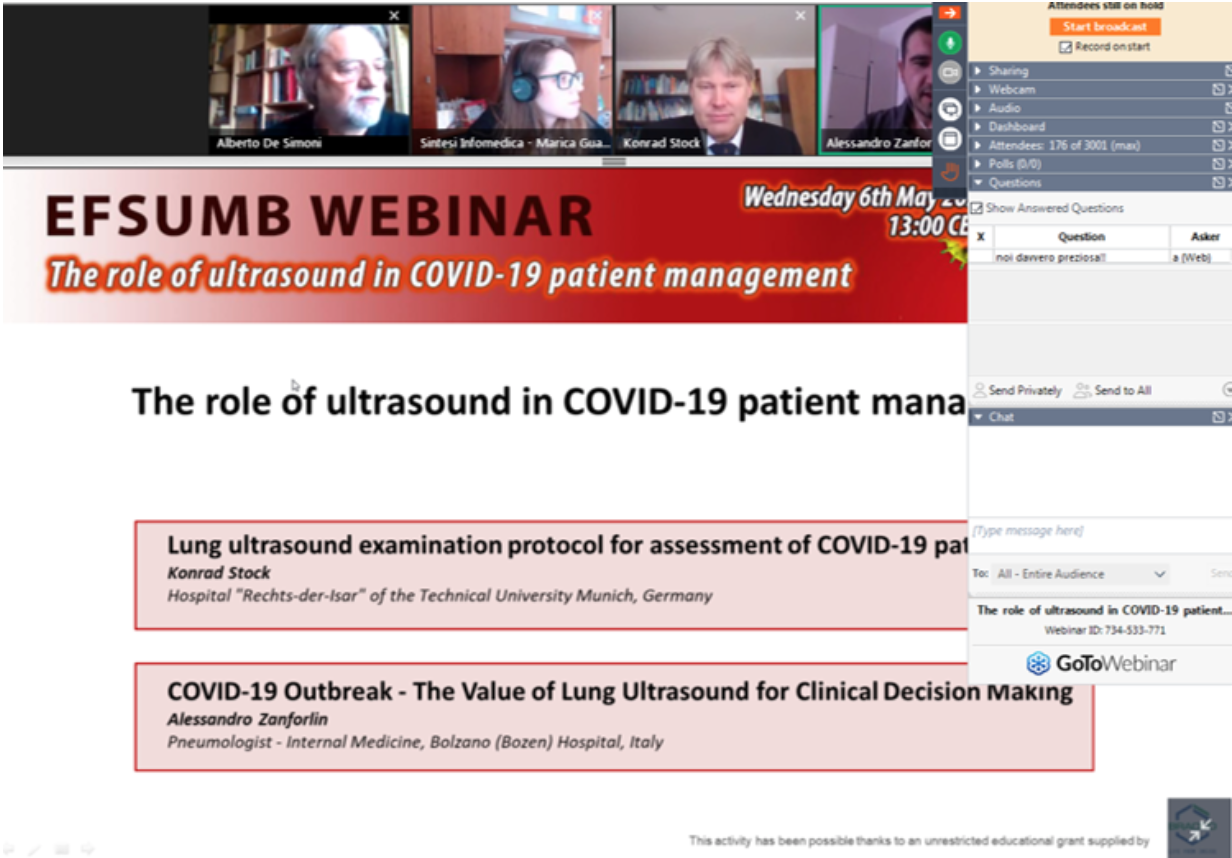
The recent webinar featuring Konrad Stock (Germany) and Alessandro Zanforlin (Italy).
Over the last year, EFSUMB has continued to publish guidelines and position papers, with the guidelines on non-liver elastography a notable new guideline. In addition, position papers on ultrasound in appendicitis, diverticulitis and intestinal emergencies were also published. A notable ‘different’ aspect of ultrasound was a carefully constructed position paper on dermatological ultrasound, adding another group of practitioners to the ultrasound users of this world. Look out for this which is currently available online on the European Journal of Ultrasound website. In addition, the long-awaited combined Societies update on the liver CEUS guidelines has entered the final stages, recently accepted for publication, and will be simultaneously published in the journals of WFUMB and EFSUMB.
Lastly, whilst we await the world to return to normality and we can meet again as a community, we must all stay safe and well, and learn to do things differently!
EFSUMB Latest Activities
- Gastrointestinal Ultrasound (GIUS) in Intestinal Emergencies–An EFSUMB Position Paper – Click here
- European Federation of Societies for Ultrasound in Medicine and Biology (EFSUMB) Position Statement on Dermatologic Ultrasound – Click here
- Work Related Musculoskeletal Injuries in Sonographers and Providers: The Grand Challenge. Yusef Sayeed, MD, MPH, MEng(1) Keziah Sully, MD (2), Kristine Robinson, MD(3). Article in EJU Issue 2. Page: 202. Click Here
- EFSUMB have carried out 2 very successful COVID-19 Webinars in the last two months. The first, took place on 14th April on Lung Ultrasound in the COVID-19 era – presentations can viewed here >>
The second webinar in this series took place on 6th May on The role of ultrasound in COVID-19 patient management. Presentations from this event can be viewed here >> - Guidelines and Good Clinical Practice Recommendations for Contrast-Enhanced Ultrasound in the Liver
Update 2020 ~ COMING SOON


AIUM Report

Information and Guidance for Ultrasound Professionals
This list of resources is ever-changing and some originate from other organizations and entities. They cover a range of topics. The AIUM has attempted to verify all external resources and only posts original-source materials.
AIUM Connect: Share your voice, comments, pertinent information and additional resources in our online members only community. For the most up-to-date resources and information, follow the AIUM on our social media channels.
- Cleaning, Safety, and PPEs
- Guidelines, Operation Policies, Resource Centers & Treatment Recommendations
- Online Education (Webinars, Videos, & Podcasts)
- General & Scientific Journal Articles
- Billing & Coding
- Advocacy
Cleaning, Safety, and PPEs
- Guidelines for Cleaning and Preparing External- and Internal-Use Ultrasound Transducers and Equipment Between Patients as well as Safe Handling and Use of Ultrasound Coupling Updated resource includes a section specifically on COVID-19. (AIUM)(Revised Official Statement: 3/27/2020)
- Patient and Ultrasound Provider Protection Quick Guide (AIUM)
- Ultrasound Transducers, Equipment, and Gel Quick Guide (AIUM)
- COVID-19: Transducer Cleaning and Personal Protective Equipment webinar and the associated Q&A document from the speakers (AIUM)
- Approved Disinfectants for COVID-19 (EPA)
- How to perform a safe ultrasound examination and clean equipment in the context of COVID-19 (WFUMB)
- Infection Control for COVID-19: Can Masks and Other PPE be Multi-Use? How Do Surgical Masks Compare to N95 Respirators? (Department of Radiology at the Stanford University School of Medicine)
- ISUOG Safety Committee Position Statement: safe performance of obstetric and gynecological scans and equipment cleaning in the context of COVID-19 (ISUOG)
- Strategies to Optimize the Supply of PPE and Equipment (CDC)
Guidelines, Operation Policies, Resource Centers & Treatment Recommendations
- Coronavirus Resource Center (Medscape)
- COVID-19 POCUS HUB (Medstudent POCUS)
- COVID-19 Resource Center (ECRI)
- COVID-19 Resources (RSNA)
- COVID-19 FAQs for Obstetrician–Gynecologists, Gynecology (ACOG)
- COVID-19 Resources from the Society for Maternal-Fetal Medicine (SMFM)
- Emergency Resources: COVID-19 (SCCM)
- Guidance on infants born to mothers with suspected or confirmed COVID-19 (AAP)
- Non-Emergent, Elective Medical Services, and Treatment Recommendations (CMS)
- POCUS Application in COVID-19 (IMRESPDX)
- Complete Guide to CARDIAC Ultrasound in COVID-19 (Vi Am Dinh, MD FACEP RDMS RDCS)
- Statement on Protection of Patients and Echocardiography Service Providers During the 2019 Novel Coronavirus Outbreak (ASE)
- Lung Ultrasound in COVID-19 Pandemic (WINFOCUS)
- PAN COVID: an international registry of Pregnancy And Neonatal outcomes of COVID from the International Society of Ultrasound in Obstetrics and Gynecology (ISUOG)
Online Education (Webinars, Videos, & Podcasts)
- Upcoming Webinar: Lung Ultrasound and COVID-19: Protocol Standardization, Key Technical Aspects, and Clinical Use on Tuesday, May 5th at 12 PM EDT (AIUM)
- Webinar: COVID-19: Advanced Applications of Lung Ultrasound: Viral Pneumonia and Acute Respiratory Distress Syndrome (ARDS) (AIUM)
- Webinar: COVID-19: Expediting Obstetric Ultrasound Exams (AIUM)
- Webinar: COVID-19: Transducer Cleaning and Personal Protective Equipment and the associated Q&A document with the speakers (AIUM)
- Webcast: International Ultrasound Forum Network Conference (AIUM, CUDA)
- Video: Lung Ultrasound: Nuts & Bolts & COVID-19 (Rachel Liu, MD, FAIUM, FACEP & AIUM)
- Lung Ultrasound Modules (Calgary Internal Medicine Ultrasound)
- Podcast: POCUS in COVID-19 (Ultrasound E.L Podcast)
- Podcast: COVID-19 Virtual Reality Technology (George Washington University Hospital)
- Video: How to perform lung ultrasound in pregnant women with suspected COVID-19 infection (ISUOG)
- Video: POCUS for COVID-19 (Joseph Minardi, MD)
- Video: Critical UltraSound (WINFOCUS) (Giovanni Volpicelli, WINFOCUS board member)
- Webinar: Combating COVID-19 Together (ECRI)
- COVID-19 online learning resources for Clinicians (SMFM)
- Registry Review Series videos for Sonographers (SDMS)
General & Scientific Journal Articles
- Is there a role for lung ultrasound during the COVID-19 pandemic? (JUM)
- Proposal for international standardization of the use of lung ultrasound for COVID-19 patients; a simple, quantitative, reproducible method (JUM)
- Lung Ultrasound articles (JUM)
- Benefits, Open questions and Challenges of the use of Ultrasound in the COVID-19 pandemic The views of a panel of worldwide international experts (EJU)
- COVID-19: Novel Coronavirus Content Articles (Wiley Online Library)
- International evidence-based recommendations for point-of-care lung ultrasound (PubMed)
- The Latest from RSNA journals on COVID-19
- Universal Screening for SARS-CoV-2 in Women Admitted for Delivery in The New England Journal of Medicine (NEJM)
- X-ray with Ultrasound Can Be Used to Manage Pneumonia in Children (Diagnostic Imaging)
- Sonographic signs and patterns of COVID-19 (The Ultrasound Journal)
- Venous and arterial thromboembolic complications in COVID-19 patients admitted to an academic hospital in Milan, Italy (Thrombosis Research)
Billing & Coding
- CPT reporting for COVID-19 Testing (AMA)
- Clinician Letter addressing methods Accelerated Payments, Testing & Claims, and Telehealth Visits (CMS)
- Payment policies & regulatory flexibilities during COVID-19 emergency (CMS)
Advocacy
- Joint letter to the United States Congress advocating for PPE and telemedicine funding for healthcare professionals (3/27/20)
- Joint letter to the United States Secretary of Health and Human Servicesadvocating for financial assistance for positions who have incurred significant financial losses due to COVID-19 (4/7/20)
- Joint letter to the United States Congress addressing the Medicare Accelerated and Advance Payment Program, Medicare and Medicaid Payment, Direct Financial Support, Small Business Loans, Telehealth, Support for Resident Physicians and Students, the Emergency Medical Treatment and Labor Act (EMTALA), & Liability concerns during the COVID-19 pandemic(4/15/20)
Other Educational Resources
Webinars – 80+ webinars are available on a variety of topics, with 2-3 new webinars added each month. CME is free for members.
Journal Tests – 150+ JUM tests available – all free to members.
Online Lectures – 70+ online lectures captured from past AIUM Annual Conventions are available free to AIUM members and are accessible within each respective community. 52 CME video activities available.
Enhanced Guidelines – 11 enhanced guidelines available – CME tests free to members.
Resource Library – The AIUM Resource Library provides members online access to publications on topics such as ultrasound techniques, terminology, safety and bioeffects, and quality assurance for all professional levels. Especially useful for those new to the field, the AIUM’s Recommended Ultrasound Terminology is one of the publications available for download.
Thank you for the opportunity to provide the WFUMB with this update on our activities. As always, we welcome opportunities to collaborate with WFUMB on projects of mutual interest.
About AIUM: The American Institute of Ultrasound in Medicine is a multidisciplinary medical association of nearly 10,000 physicians, sonographers, and scientists dedicated to advancing its mission by providing education, fostering best practices, and facilitating research. We believe that utilizing ultrasound first results in safe, effective, and affordable medical imaging that improves patient care. For more information, visit www.aium.org.


ASUM Report
Fredrick Joshua

Our deepest gratitude goes out to our members, all doctors, sonographers, allied health, researchers, scientists and other healthcare services for their commitment and professionalism in the fight against COVID-19.
ASUM has created a dedicated webpage, collating multiple resources relating to ultrasound and COVID-19, as we work to keep our members and the community up to date on all relevant material to offer our support. This includes guidelines, webinars and articles relating to safety and cleaning, cardiopulmonary, obstetrics and general ultrasound topics as they relate to COVID-19. Complimentary ASUM webinars included international guests in emergency and critical care, to share their knowledge and experience to date as we face this challenge together.
POCUS in a pandemic: Lung ultrasound and COVID-19 presented by Dr Daniel Kim, Clinical Assistant Professor and the POCUS Fellowship Director for the Department of Emergency Medicine, University of British Columbia.
COVID-19 with a focus on cardiac dysfunction and ultrasound presented by Professor Michel Slama, head of ICU at Amiens Hospital, France and the Chairman of Critical Care Medicine.
ASUM guidelines are now published in the Australasian Journal for Ultrasound in Medicine titled COVID-19: Infection prevention and control guidance for all ultrasound practitioners authors are J.M.Basseal, S Campbell Westerway and T.McAuley.
These guidelines have now been recognised and acknowledged in the WHO website.
ASUM2021
Whilst large meetings to be held in October/November have not been banned in Australia, the growing level of uncertainty associated with the increasing spread of COVID-19 has resulted in a concern regarding the ability of sponsors, exhibitors, faculty and attendees to commit to the meeting. ASUM has therefore postponed the ASUM2020 conference, due to be held 30 October to 1 November 2020 in Sydney.
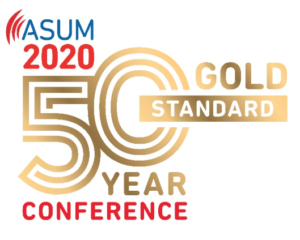 The health services not only in Australia and New Zealand, but globally, have been placed on high alert and we have taken this into consideration, we have decided to focus on providing more immediate support to our members and community as we all respond to the COVID 19 crisis.
The health services not only in Australia and New Zealand, but globally, have been placed on high alert and we have taken this into consideration, we have decided to focus on providing more immediate support to our members and community as we all respond to the COVID 19 crisis.
This has been a challenging decision in an everchanging situation and we are pleased to announce that we have been able to reschedule the Conference to November 19-21 2021 in Sydney, when we are confident the current situation will have stabilised and all attendees will be able to make definitive plans to attend the congress and 50th celebrations.
ASUM would like to sincerely thank and acknowledge our scientific committee for their commitment to ASUM2020 and will continue to work with them as we plan for ASUM2021. We thank you for your support and patience at this time and we look forward to welcoming you to Sydney in November 2021.
AJUM
The Australasian Journal of Ultrasound in Medicine (AJUM) has recently achieved SCOPUS indexing, and we are now well on our way to achieving Medline listing. AJUM is a multi-disciplinary journal with an extensive readership across 140 countries. Our ‘special issue’ earlier in the year focussed on Fetal, Neonatal and Paediatric ultrasound and is openly available.
The AJUM is available in 4,390 institutions worldwide, listed in EMBASE and is available in 7,669 Research4life libraries.
We would like to thank the editorial board, both local and international, for their commitment to education and research, as we increase manuscript submissions and therefore ultrasound knowledge.
If you have original research, systematic reviews or even a “How to…..” article, please submit your manuscripts to the AJUM online. These “How to…..” articles are highly downloaded and made freely available through our publisher Wiley for our national and international audience.
ASUM will shortly launch the CPD quiz associated with AJUM to support learning outcomes and add to the CPD online options.
Education
Current circumstances have forced assessments for all educational offerings to be postponed. The nature of ultrasound regularly requires assessments to be face to face, though we are actively looking at options to enable participants access to assessments while managing the governance and quality of these assessments.
Where possible to do so, members have been offered deferral options, without penalty, to allow them to complete their training when appropriate to do so. For those studying the DMU, ASUM continues to work with the accrediting bodies to enable our students the opportunity to successfully complete their studies to become a sonographer.
An outcome-based approach to medical education has been widely adopted in Australia. ASUM is committed to ensuring that the programs delivered by the Society are contemporary and reflective of best practice. External review of the Diploma of Diagnostic Ultrasound (DDU) and Certificate of Clinician Performed Ultrasound (CCPU) curriculum, will allow us to focus on digital delivery where appropriate, ensuring greater reach to regional and remote areas of Australia and New Zealand. Many members contributed to the consultation process for clinical relevance and maintenance of a high standard of education, focussed on patient care.
To recognise those who have achieved a CCPU, as well as support those looking for an appropriate supervisor, we have implemented the CCPU register on our website. This is voluntary with 500+ on the list at launch.
The education committees and associated supervisors and examiners continue to work hard to assist the Council deliver on the strategic objectives of the Society. ASUM is greatly appreciative of those members who continue to make significant contributions of their time and expertise to support the society and the many thousands of members who have studied or are currently studying programs with ASUM.
Events
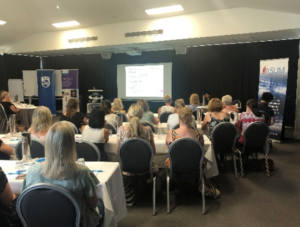 In early March, shortly before the COVID-19 lockdown was in place, ASUM held an annual regional multi-streamed event where over 110 attendees enjoyed learning from specialists. This hugely successful 2-day event ran concurrent streams of Cardiac, Obstetrics and Gynaecology, and PoCUS Lung Scanning and the volunteer presenters received extremely positive feedback.
In early March, shortly before the COVID-19 lockdown was in place, ASUM held an annual regional multi-streamed event where over 110 attendees enjoyed learning from specialists. This hugely successful 2-day event ran concurrent streams of Cardiac, Obstetrics and Gynaecology, and PoCUS Lung Scanning and the volunteer presenters received extremely positive feedback.
Many of our mainstream events and workshops have since been postponed, so where we can ASUM is working to deliver these events online, whether a webinar or virtual conference. We have been overwhelmed with the positive response to our COVID-19 webinars and believe they have been well received by our community.
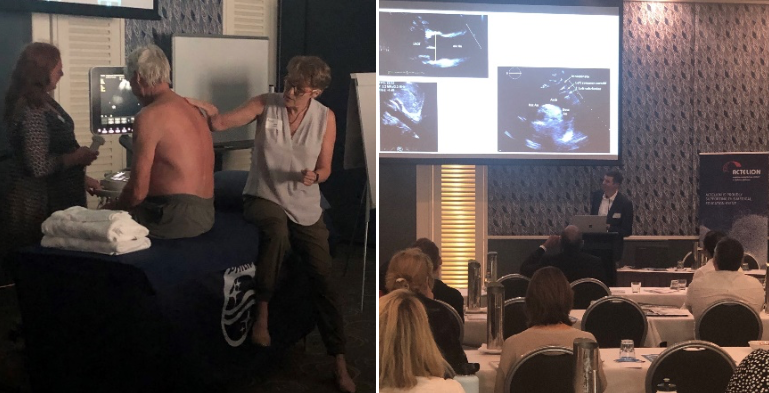
The COVID-19 webinars were made free of charge to ensure we were supporting the wider ultrasound community as they braced for the impact in Australia and New Zealand. The engagement and feedback were fantastic, and we were thrilled to be able to provide this support.
- Daniel Kim is a Clinical Assistant Professor and the Point of Care Ultrasound Fellowship Director for the Department of Emergency Medicine at the University of British Columbia presented a webinar on “POCUS in a Pandemic: Lung Ultrasound and COVID-19“
- Professor Michel Slama, head of medical ICU at Amiens, France and Chairman of Critical Care Medicine presented on ‘COVID-19 – A focus on cardiac dysfunction and ultrasound’
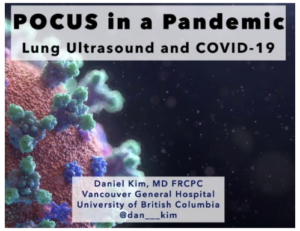
As we pivot to deliver more online learning and find new ways to deliver virtual events and continue the educational role our learning increases too. Stay safe. Stay healthy.
In memory of Dr Delwyn Nicholls PhD
Australasia has lost one of its most notable & highly esteemed sonographers with Delwyn (Deli) Nicholls passing away on Wednesday 25th March 2020 after a three-year battle with cancer.
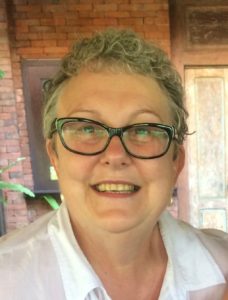
Deli started her imaging career as a radiographer before undertaking her general ultrasound training at Sydney University. This was soon followed by a Diploma in Medical Ultrasound (DMU) in vascular ultrasound through the Australasian Society for Ultrasound in Medicine (ASUM). Her most recent role was as a senior clinical sonographer and educator at Sydney Ultrasound for Women, and co-ordinator/head tutor for the Royal Prince Alfred Hospital Registrar Obstetric & Gynaecology ultrasound skills training program.
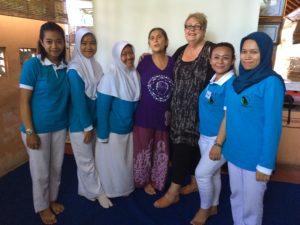
Delwyn worked tirelessly for the ultrasound community, being part of the ASUM Council, the WFUMB education committee and many other projects to constantly drive the ultrasound profession to the highest standards. In 2013 she co-convened the Australasian Sonographers national conference in Sydney & co-convened the Inaugural Medical Education Program run by the ASUM at its 2017 national conference. She also convened the highly successful medical education program at the 2019 WFUMB World congress in Melbourne. Her contribution to Outreach programs, both in Australia and overseas, was profound and she particularly enjoyed her annual teaching trips to Bali. In 2015 Delwyn was the recipient of the ASUM Sonographer of the Year award and in 2017 the ASUM Clinical Educator of the Year award.
Delwyn completed a Graduate Diploma of Health Education at Monash University, Melbourne before undertaking a Master of Clinical Education. Over the past seven years she has been working on her PhD in medical education through Flinders University in South Australia. Her ground breaking work focused on understanding and reporting the instructional approaches that are used by Australian sonographers to teach the psychomotor skills that are required for clinical practice.
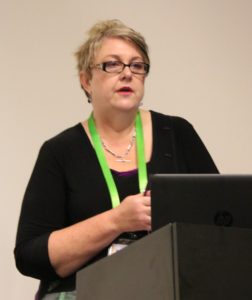 Delwyn was a sought after speaker at both national & international conferences, both in ultrasound & education, & published seven peer reviewed papers on her research topic with another two under review and one book chapter soon to be published. She was also a co-author of the highly cited WFUMB position paper on medical student ultrasound education. In 2018, Deli was awarded a scholarship from the Prideaux Centre for Health Professions Education to attend the Rogano meeting and AMEE Education Conference in Switzerland, where she presented on her area of research.
Delwyn was a sought after speaker at both national & international conferences, both in ultrasound & education, & published seven peer reviewed papers on her research topic with another two under review and one book chapter soon to be published. She was also a co-author of the highly cited WFUMB position paper on medical student ultrasound education. In 2018, Deli was awarded a scholarship from the Prideaux Centre for Health Professions Education to attend the Rogano meeting and AMEE Education Conference in Switzerland, where she presented on her area of research.
Deli was passionate about improving the way in which ultrasound is taught. Her future career was headed towards academia, with many universities asking her to consider joining their teams. Deli’s PhD thesis was submitted for examination prior to her passing. It is with great pleasure her supervisors advised that her thesis was approved by the Deputy Vice Chancellor (Research) on the 5th May 2020. As one of her examiners wrote,
“It is Dr Nicholls’ deep dive into the literature, her immersion into the subject matter of ultrasound pedagogy, and her insights into the layering of skill acquisition that has led to a further understanding on sonographer pedagogy. The ultrasound community will benefit from it for years to come.”
We have lost a dear friend & colleague. Life in our world of ultrasound will not be the same without her.


MASU Report
Sudhir Vinayak & Hassen A. Gharbi
During this last turbulent period, the MASU board couldn’t work as hard as usual for the promotion of WFUMB goals in Africa, as all the planned courses and projects were cancelled.
WFUMB’s important recommendations prepared by the safety committee, chaired by Jacques Abramowicz, were shared with all the MASU members; in English, French and Russian.
We continue to try to promote the use of ultrasound in the Middle East countries, mainly Saudi Arabia and Oman, however, the COVID 19 situation is not favorable for such discussions today.
We hope to have our next MASU Congress, in 2021, under the auspices of WFUMB, in Italy, as a great number of Italian experts are founder members of MASU.
MASU logos evolution, at the beginning from 1986 to 2007 MASU was mainly the recipients of US knowledge’s.
Now we hope African experts are able to cooperate with all the experts in the world and to contribute in the good promotion of the medical use of US in the world.

Opinion Column in CTNCI
Our WFUMB Family Member, Pr. Hassen A. Gharbi has recently had an Opinion Columm published in the latest edition of CTNCI – take a look at the article here >> (Pages 18 & 19)
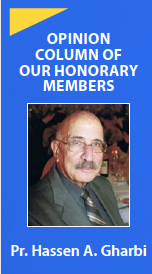

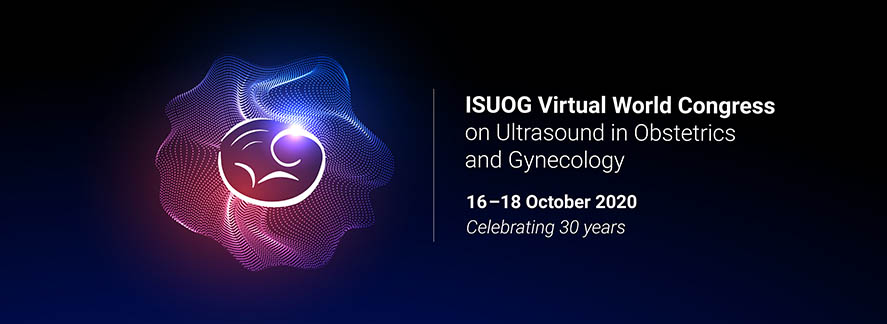
Register today to learn from the top international speakers in obstetrics and gynecology and join us in a dynamic and engaging platform with interactive session halls, breakout rooms, wellbeing zone, industry information exchange, networking areas and so much more.
Click here to register >>

 WFUMB Website Report
WFUMB Website Report
Suzanne Cain
The WFUMB site has now had nearly two years to settle and gain following and the latest statistical analysis really shows as the site continues to improve its rankings. This is solely down to hard work from our Committees as the content is regularly updated with the WFUMB activities across the world.
We are now building a good following via our social media channels and this is showing in the improved figures not only via the social media pages but from conversion via these to the main site. We have implemented a few new sections and pages and continued to improve where we can on the existing content.
COVID-19 has had an obvious effect on our site visitors – healthcare professionals and everyday people, searching for answers on this subject, saw a real spike in site visitor numbers from 25th March onwards in the direction of our COVID-19 resources page.
New pages and improvements include:
Abdominal Aortic Aneurysm Quiz – https://wfumb.info/abdominal-aortic-aneurysm-quiz/
This quiz was requested last year but came with many challenges which, working alongside Adrian Goudie, we managed to overcome. 20 Cases containing a mixture of scans and video content and questions for each case.
Image of the Month – https://wfumb.info/wfim/
This was taken over by Dr Tobias Todsen & Dr Caroline Ewertsen in January with a new look, new layout and quiz questions for interactive material. It has been a complete success and now gains approx. 21,000 hits per case in the month following publication.
COVID-19 – https://wfumb.info/covid-19/
This page went live on the 25th March after an increase in searches on our site for COVID infromation and more COVID material was being published. We have added material on various subjects surrounding COVID-19 from trusted sources. We are responding to the obvious need for information on this subject. This page received 19,300 hits from 25th March 2020 to 25th April 2020.![]()
Blog Removed / Safety Section Installed
As there was no more current blogging news we replaced the Blog section of the site with Safety on the menu instead. This gave us a whole new section dedicated to Safety Statements from across the world, this again has proven a good decision as numbers show this section to be of great interest.
Language Translator Installed
This basic translator has proven to be helpful for other language support but is a non intelligent plug in which can occasionally give some strange results. We are currently researching the best Artificially Intelligent plug in which we can swop in for more consistency in translations.
WFUMB 2023 Site – http://wfumb2023.org/
A new site set up to receive ongoing updates for the 2023 Congress in Oman.
Continued Upgrades to Caching Speed
The site in under continual assessment for speed, caching and load times. This is an ongoing process but we have installed additional bandwidth and caching plug ins to improve and monitor this.


Muscat, Oman, 17-19 January 2020 Report
Ioan Sporea, Chair Congress Committee
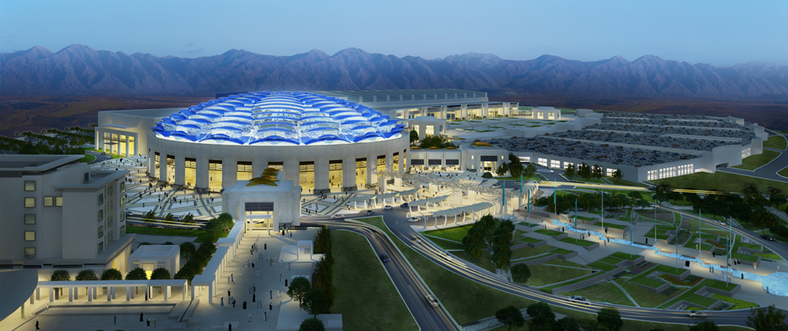
The meetings were very well organized.
The venue was visited which is very suitable for a WFUMB Congress with very good logistic conditions, enough rooms and also a suitable exhibition area. It is also very conveniently situated near to the congress hotels
(approx. 50 m).
We also met the local team who are very involved and motivated to organize a WFUMB congress event, that were also exceptional hosts.
The whole committee agreed that the conditions for the organization of WFUMB 2023 are met in Oman.
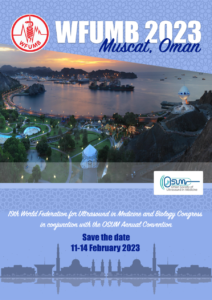 We should also mention the successful Ultrasound meeting with over 50 participants that was organized during our visit despite the recent death and mourning period of the Sultan. Ioan Sporea, Seung H Kim, Sudhir Vinayak and Hassen Gharbi gave presentations on various topics. Some of the participants had come from Iran, Nepal and some drove four hours each way from the UAE to attend the course.
We should also mention the successful Ultrasound meeting with over 50 participants that was organized during our visit despite the recent death and mourning period of the Sultan. Ioan Sporea, Seung H Kim, Sudhir Vinayak and Hassen Gharbi gave presentations on various topics. Some of the participants had come from Iran, Nepal and some drove four hours each way from the UAE to attend the course.
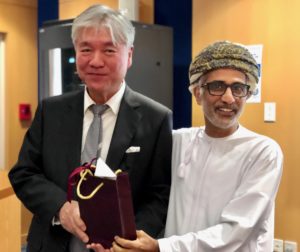
Seung H Kim and Dr Saqar Altai
Congratulations to Dr Saqar Altai, Dr Jokha Al Kalbani Dr Nihal Al Ryami and Dr Sandeep Kantor for the Course organisation under difficult circumstances and such welcoming hospitality.
For more information on the WFUMB2023 Congress visit the dedicated web site at http://wfumb2023.org


Zambia Ultrasound Society Course
Sudhir Vinayak
Report from Odd Helge Gilja and Sudhir Vinayak on the Zambia Ultrasound Society Course under Stefan Kawimbi held on 25 – 28 September 2019 in Livingstone, Zambia.
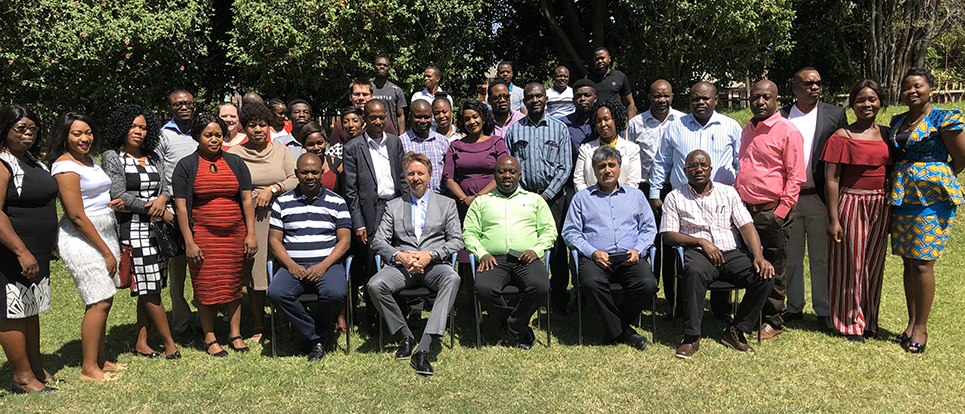
Talks from Odd Helge Gilja on US of abdominal organs, US of the liver and biliary tract, Doppler US and US Doppler of retroperitoneal vessels. Talks from Sudhir Vinayak on New Standards and Techniques for fetal dating scans, Ectopic pregnancy, Polycystic Ovary (PCO) and Polycystic Ovary Syndrome (PCOS), Technique for US Guided Breast Biopsies.
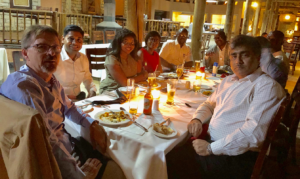 Zambia has a very enthusiastic group of Radiologists, Physicians, Radiographers and Sonographers who all attended this conference. Throughout the day, all participants were in the lecture room, listening to the talks and participated in the hands-on training led by Profs Gilja and Vinayak. As this meeting was in the South of Zambia, only 38 participants could make it. Future conferences in the capital Lusaka could have well over 100 participants. The need for education in ultrasound that WFUMB can provide is huge.
Zambia has a very enthusiastic group of Radiologists, Physicians, Radiographers and Sonographers who all attended this conference. Throughout the day, all participants were in the lecture room, listening to the talks and participated in the hands-on training led by Profs Gilja and Vinayak. As this meeting was in the South of Zambia, only 38 participants could make it. Future conferences in the capital Lusaka could have well over 100 participants. The need for education in ultrasound that WFUMB can provide is huge.
Both Odd Helge and I see Zambia as a good Centre of Education with participation from neighboring countries. The core team of Radiologists and Radiographers are very motivated and they are working towards setting up an ultrasound society under the auspices of the Radiology society.
![]()

WFUMB / ISUOG Basic Obstetrics Course at FIJI COE
Raymond Keshwan, WFUMB Fiji COE Director
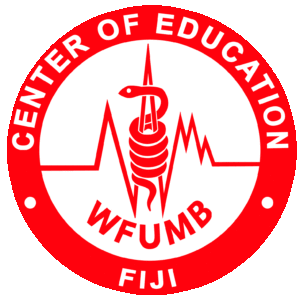
In partnership with ISUOG, WFUMB delivered a 4 day ISUOG Basic Obstetrics Course from 11th – 14th March 2020 at the WFUMB Fiji CoE at the Department of Medical Imaging and Anatomy, Fiji National University in Suva, Fiji.
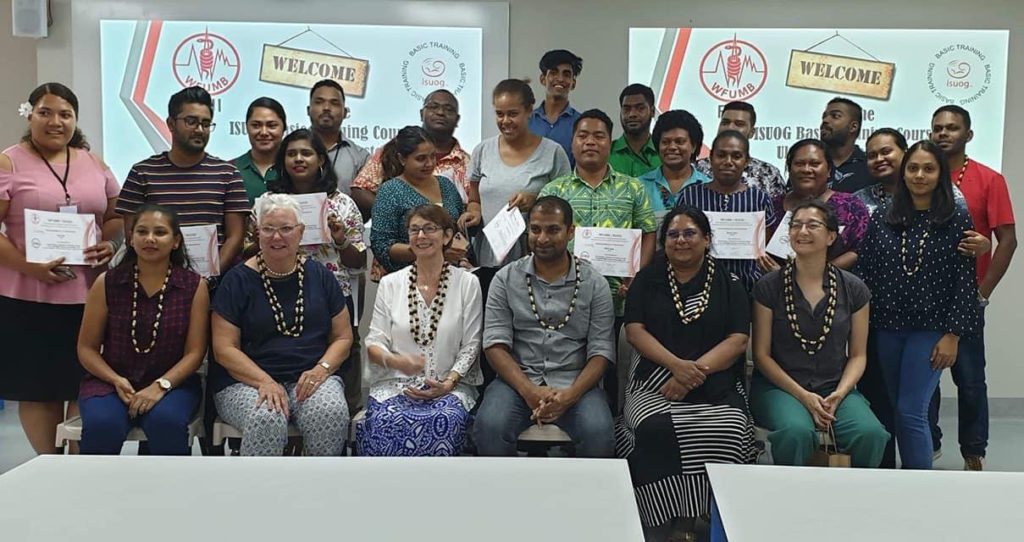
The training was facilitated by Dr Nayana Parange and Caterina Watson for ISUOG and Dr Sue Westerway and Sue Hewlett for WFUMB and was attended by 19 participants from Fiji, Tonga, Tavalui and Vanuatu. The event was a major success and participant reviews were very positive regarding the knowledge and skills of facilitators, the contents of the course and the hands on scanning to improve skill sets.
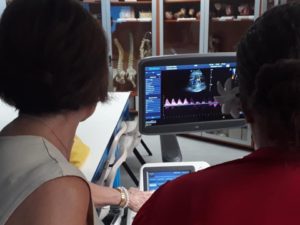 ISUOG provided course materials to the participants about a week before the training. The aim of this step was to encourage the participants to be on par with the discussions that took place during the sessions and give them confidence to engage in the learning and teaching activities during the 2-day theoretical and 2-day practical work program. Topics such as the physical principles of ultrasound, assessing the normal pregnancy in 4-10 week and 10-14-week singleton and twin pregnancies, the 20 + 2 planes approach to the normal mid trimester scan were covered.
ISUOG provided course materials to the participants about a week before the training. The aim of this step was to encourage the participants to be on par with the discussions that took place during the sessions and give them confidence to engage in the learning and teaching activities during the 2-day theoretical and 2-day practical work program. Topics such as the physical principles of ultrasound, assessing the normal pregnancy in 4-10 week and 10-14-week singleton and twin pregnancies, the 20 + 2 planes approach to the normal mid trimester scan were covered.
Due to its ready availability and safety, there is an ever growing demand in the Pacific region for ultrasound examinations. In the absence of a formal education programme in the area, this training provided need based knowledge to practitioners of ultrasound. The enhanced skill sets resulting from the course will allow the participants to conduct obstetric ultrasound examinations with more confidence.
We wish to extent our sincere gratitude to WFUMB for being at the forefront of ultrasound education for the developing nations like Fiji and the Pacific region and to ISUOG for agreeing to collaborate with WFUMB in this important project.
Ultrasound Updates 2020:
WFUMB & MUST Collaborative Course
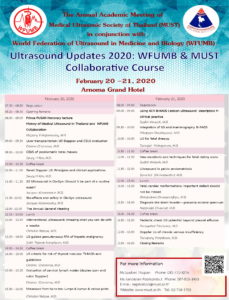
The Medical Ultrasonic Society of Thailand invited WFUMB to participate in their meeting with lectures from the ExB. Over 150 attendees participated in February 2020 despite some anxiety about COVID-19, with most from Thailand but also coming from Bhutan, Nepal and Myanmar. We received such warm hospitality from the MUST organisation and the two day meeting was run very professionally.
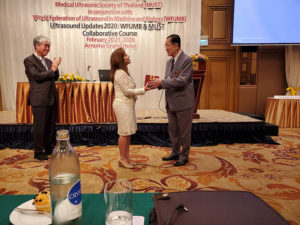
Retired, but sprightly Dr Kittipong Vairojanavong opened the meeting with a history of medical Ultrasound in Thailand and he spoke of the long collaboration with WFUMB – notably with regular visits from past WFUMB President, Dr George Kossoff. The WFUMB presentations were well received – the amount and duration of applause is a measure of Thai approval. We were present at the handover of the Presidency from Dr Walailak Chaiyasootto Dr Tuangsit Wataganara, a fetal medicine expert at the largest hospital in Bangkok with over 2,000 beds.
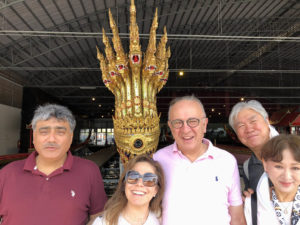
After two full days of presentations and an ExB meeting, a boat trip to the Royal Barges National Museum was for relaxation and as the official photographer I include my best photos of these exquisite ceremonial barges!


Bangladesh COE Report
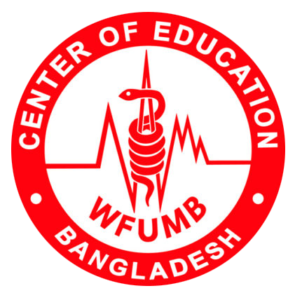
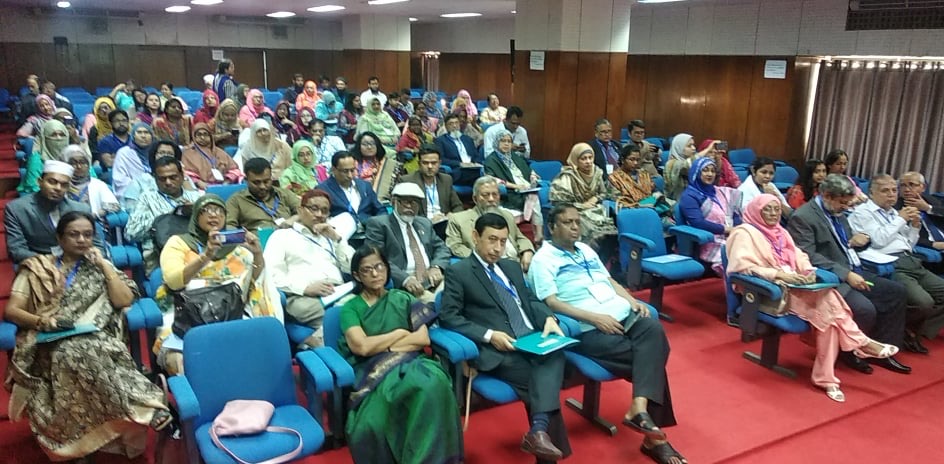
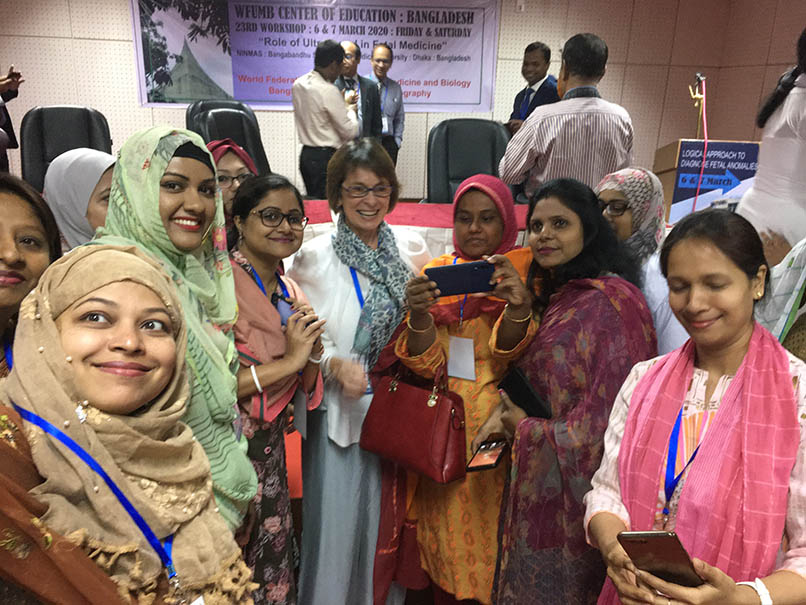


Moldova COE Report
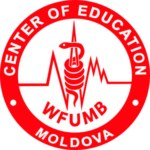
On 29 February 2020, as part of continuing education programs, the WFUMB CoE Chisinau (Sergiu Puiu and Liliana Fuitor as lecturers) held the ordinary training course in gynecological ultrasonography as part of the larger series of courses in OB/GYN ultrasound provided annualy for OB/GYN and Radiology residents, as well as for young doctors.
Traditionally, the course was focused on basic to intermediate ultrasound, having as topics normal ultrasound appearance of female pelvis and echografic features of most common gynecological pathologies, as well as basic functionality and settings of the ultrasound machine. The event was the first part of scheduled courses, wich include also the first and second trimester basic ultrasound. Since the courses like that are provided for limited number of participants (as much as 20), they are very popular among young doctors, due to higher opportunity getting, as well as improving theoretical and practical schills in ultrasound examination, due to larger acces to the ultrasound machine.
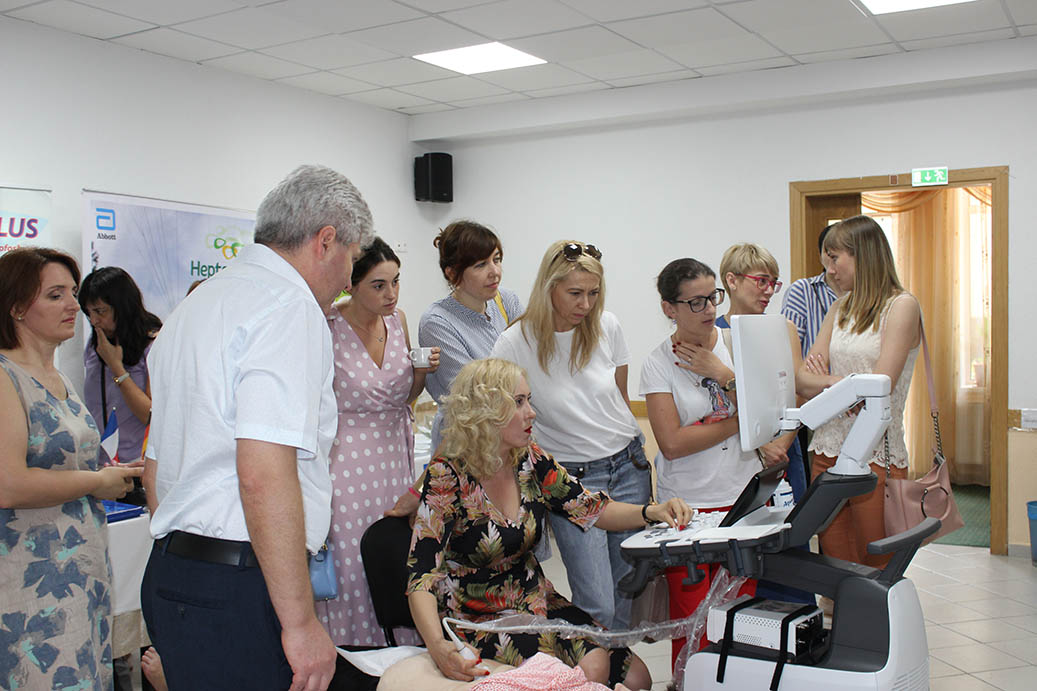
Referring to the major events provided recently by WFUMB CoE Chisinau, we should mention the Abdominal Ultrasound Workshop at the Gastroenterology and Hepatology Chisinau Summer School, held on 21-22 June 2019 (lectuters Vasile Turcanu, Sergiu Puiu and Carolina Tambala) and the Workshop “Ultrasound of female and male reproductive organs pathologies” held on 02 November 2019 and having as invited WFUMB speakers: prof. Mikhail Bulanov (Russian Federation), prof. Vladimir Mitkov (Russian Federation) and prof. Muminat Mitkova (Russian Federation). Both programs included theoretical and live scan sessions. Up to 200 participants have attended each course. The speakers and attendees appreciated the workshops very much.
Unfortunately, because of COVID-19 pandemia some scheduled courses were canceled or postponed, but we are looking forward to resume as soon as possible the education programs.
Education Committee Report
The Education Committee established at the World Congress of WFUMB in Melbourne has the following members:
- Christian Nolsoe, Chair. (Outreach and CoE Task Force leader)
- Odd Helge Gilja, Chair. (E-learning Task Force leader)
- Seung Hyup Kim (President – ex officio)
- Harvey Nisenbaum (Student Education Task Force leaders)
- Dieter Nurnberg (Student Education Task Force leaders)
- Byung Choi (Regional Director AFSUMB)
- Ioan Sporea (Regional Director EFSUMB)
- Leandro Fernandez (Regional Director FLAUS)
- Hassen Gharbi (Regional Director MASU – Francophone)
- Sudhir Vinayak (Regional Director MASU – Anglophone)
- Sue Westerway (Regional Director ASUM)
- Fredrik Joshua
Objectives for Edu Com
Our vision for the work is
«bringing ultrasound to the world»,
on several levels, which will be facilitated through 3 different task forces: Outreach and CoEs, Student education, and e-Learning.
Webinars
The WFUMB Webinar series is continuing and recently a webinar on Interventional ultrasound was held. Upcoming webinars are: Infection control, Doppler US, Kidney and urology, “Ultrasound the Best”, HCC, and breast ultrasound.
WFUMB 2021 Timisoara, Romania
Young Investigator Award will take place, maybe in conjunction with the EFSUMB YI session. It was agreed to invite one YI from each Federation.
Centres of Education (CoE) and outreach TF
CoE matters
During the WFUMB Melbourne AC an updated general CoE Agreement was decided with a 7 years cadence for WFUMB CoEs. This implies sustainable economic support for 2 new CoEs every year.
At our latest Edu Com GTM in January New CoEs priorities were decided. The plan is to have new COEs within the next year in Lima, Peru (proposed by Leandro Fernandez – Launching will coincide with ExB meeting in March 2021) and in Lusaka, Zambia (proposed by Sudhir Vinayak)
Other candidates are Nepal (Byung Choi has received an application), Ukraine (proposed by Ioan Sporea as a COE having found a key person).
The current status is that right now AIUM is the only member federation without any CoE. Virgin Islands has been mentioned as an option and Christian Nolsoe is in contact with AIUM to explore this possibility.
Fast COE News from around the Globe
- CoE courses have been successful completed in Vietnam, Moldova and Albania during the first part of 2020 however for the rest of this year all CoE activities are uncertain and we have no confirmed information that any CoE course will run anywhere.
- Omolola from Northern Nigeria is keen to create a CoE and Sudhir Vinayak is working with them to set this up. It was agreed earlier their application should be treated as an entirely new entity.
- Hassen Gharbi proposed sending a lecturer in September 2020 (likely will not take place in face of COVID-19) to evaluate the Togo COE whose activity fluctuates.
Christian Nolsøe and Odd Helge Gilja
Safety Committee Report
- Abramowicz JS and Basseal JM (co-authors), on behalf of the WFUMB Safety Committee (Jacques S. Abramowicz, MD, Iwaki Akiyama, PhD, David Evans, PhD, F. Brian Fowlkes, PhD, Karel Marsal, MD, PhD, Yusef Sayeed, MD, Gail ter Haar, PhD). WFUMB Position Statement: How to perform a safe ultrasound examination and clean equipment in the context of COVID-19. [Epub ahead of print]. https://doi.org/10.101/j.ultrasmedbio.2020.03.033. Translated into French, Japanese, Portuguese, Russian, Ukrainian, Spanish.
- Abramowicz JS, Basseal JM, Brezinka C, Dall’Asta A, Deng J, Harrison G, Lee JCS, Lim A, Maršal K, Miloro P, Poon LC, Salvesen KÅ, Sande R, Ter Haar G, Westerway SC, Xie MX, Lees C. ISUOG Safety Committee Position Statement on use of personal protective equipment and hazard mitigation in relation to SARS-CoV-2 for practitioners undertaking obstetric and gynecological ultrasound. Ultrasound Obstet Gynecol. 2020 Apr 7. doi: 10.1002/uog.22035. [Epub ahead of print].
- Poon LC, Abramowicz JS, Dall’Asta A, Sande R, Ter Haar G, Maršal K, Brezinka C, Miloro P, Basseal J, Westerway SC, Abu-Rustum RS, Lees C. ISUOG Safety Committee Position Statement: safe performance of obstetric and gynecological scans and equipment cleaning in the context of COVID-19. Ultrasound Obstet Gynecol. 2020 Mar 23. doi: 10.1002/uog.22027. [Epub ahead of print]
- Whitley S, Abramowicz JS, Newman D, Blazic I, Frija G, Del Rosario M, Van Deventer E: WHO Technical Brief on IPC for imaging services in COVID-10 patients
- Abramowicz JS: Initiatives to keep ultrasound safe during the COVID-19 pandemic. For the International Society for Strategic Studies in Radiology (IS3R)
Archives Committee Report
The WFUMB History/Archives Committee (now Archives Committee) was formed in 2003, initially proposed by George Kossoff.
WFUMB is fortunate that it had the foresight to establish early a History/Archives Committee. This committee has monitored closely:
- Historical papers written by individuals associated with the establishment of societies and Federations,
- Papers dealing with developments of ultrasound in various specialties.
At the Montreal 2003 Congress WFUMB released a CD that contains a comprehensive collection of papers published until then, and the interested reader is referred to this CD that is available from the WFUMB Secretariat
Many pioneers of medical ultrasound and WFUMB contributed to the history and archive of the WFUMB enormously. The former chair of the WFUMB Archives Committee Seung Hyup Kim also contribute a lot to the documents of the WFUMB History.
The File of History of Medical Ultrasound and Hx of WFUMB in Chronological Order(attached) was initiated by Seung Hyup Kim . This is based on the hard work by Seung, and supported by the former Archive Committee members. I added some other information (in red color). Some are from Iwaki Akiyama (Japan and AFSUMB) recently, and some from Odd Helge Gilja (EFSUMB).
Actually a lot of new important events happened after 1980, particularly new US technologies; many are developed from our physicist colleagues. I hope we can add more to this chronological file; the Archive Committee, consisting of Yi-Hong, Iwaki, Paul, Hassen, Jorge, Yusef, Fredrick, and Christoph, have been trying to collect more through English publications, and the Archive committee members have been working on other Archive collections, but your inputs would be very helpful to the “History of Medical US”. Since Christoph is now preparing a new “history of medical ultrasound” review, new information can make the report more complete.
Prof Yi-Hong Chou
WFUMB Publications Committee
The World Federation for Ultrasound in Medicine and Biology (WFUMB) has continuously strengthened the publication activities in recent years. Just to recall the WFUMB CEUS and elastography guideline updates [(1-6)] and in close follow up elastography of the thyroid [(7)], elastography of the prostate [(8)] and elastography of the liver [(9)], WFUMB position paper on student medical ultrasound education [(10, 11)], disinfection and hygiene practice [(12)], thyroid interventions [(13)]. WFUMB has also published a frequently used and well-cited WFUMB Position papers “How to perform CEUS (general)” [(14)] and most recently on CEUS of MSK [(15)]. Practical CEUS recommendations for specific organ systems are under preparation.
The WFUMB CEUS Liver update has been accepted by UMB.
WFUMB addresses a series of publications on incidentalomas, which will look at the definition, prevalence, imaging features, combined imaging criteria, image guided biopsy if relevant and the follow up and recommendations.
The WFUMB Image of the Month has been published since July 2018 but has not been as succesful as the cases of the month (EFSUMB). The strategy of this project has been changed.
Current projects include the guideline update of breast elastography, position paper on the use of lung artefacts, CoViD safety issues and the creation of an image bank.
All papers published with the pubmed search term “WFUMB” from 2013 up to now are listed below mainly guidelines, position papers and safety issues [(1-8, 10-12, 14, 16-25)]. Earlier published papers with the search term ”WFUMB” are cited as well mainly with safety issues and symposium reports [(25-42)]. This evolution might mirror publication activities of WFUMB in recent years in the fielf of guidelines, position papers and safety issues.
The collaboration with the succesful WFUMB Archive Committee will be intensified and a WFUMB History of Ultrasound document created.
Any other proposals are warmly welcome to stimulate publication activity of WFUMB.
On behalf of the publication committee – Prof Christoph F Dietrich
Update of current projects
WFUMB projects, recently published or under preparation
- WFUMB Guidelines, liver, accepted UMB, submitted UiM/EJU for simultaneous publication in both journals.
- WFUMB Guideline project, update elastography of the breast, in preparation (leader Richard Barr).
- WFUMB position paper on CEUS, MSK, published [(43)].
- WFUMB Position papers, incidental findings, adrenal gland (example on how to do it), declined by UMB (reasons to be determined since this is a core project of WFUMB PC), accepted and published by Ultrasonography [(17)].
- WFUMB Position papers, incidental findings, editorial (UMB, accepted).
- WFUMB Position papers, incidental findings, gall bladder and bile ducts, prefinal stage.
- WFUMB Position papers, incidental findings, other organs, work in progress, liver, kidney (SHK, RB), hepatobiliary tract (Torben Lorensen, CN, CJ), cystic pancreatic lesions (CJ,MDO), solid pancreatic lesions (MDO, CJ), pelvis (SW, JSA), testis (MJ), thyroid, spleen, (GI, chest), echocardiography, during pregnancy, others
- Incidental findings in healthy subject during examination, ethical, legal and medical consequences, work in progress
- Student Ultrasound Education part II, position paper, withdrawn from UMB, accepted by Med Ultrason
- Student Ultrasound Education part III, under preparation
- WFUMB Position paper, lung ultrasound, submitted to UMB in winter time
- WFUMB Position paper, How to perform CEUS (general) [(14)], additional “How to perform” papers are in process of preparation
- Dynamic CEUS guidelines last published 2012 and require a short update. CFD already contacted Peter Burns, Brian Fowlkes and Martin Krix and proposed contacting also Mike Averkiou, and Fabio
- Peter Coombs has been asked to write up and publish his experiences in Ethiopia which would be a WFUMB/ASUM activity
- AFSUMB EUS paper, prefinal
- WFUMB project lung US in children, almost finished
- WFUMB Position Paper “How to quantify steatosis of the liver”, initiated


Personal information
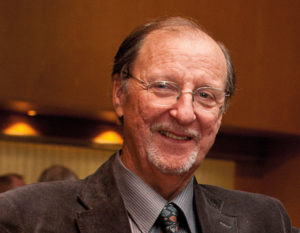 Svein Ødegaard born January 10th 1945 in Manger, Norway
Svein Ødegaard born January 10th 1945 in Manger, Norway
Former professor and director
Department of Medicine and National Centre for Ultrasound in Gastroenterology
Haukeland University Hospital and University of Bergen
Bergen, Norway
Married to Brita Prestkvaern Ødegaard, four children, eight grandchildren.
Norwegian citizenship, MD University of Bonn 1970, PhD (Dr.med.) 1987 University of Bergen.
Specialist in Internal medicine and Gastroenterology in Scandinavia and the European Union.
Publications
150-200 papers, 3 books, many national and international lectures.
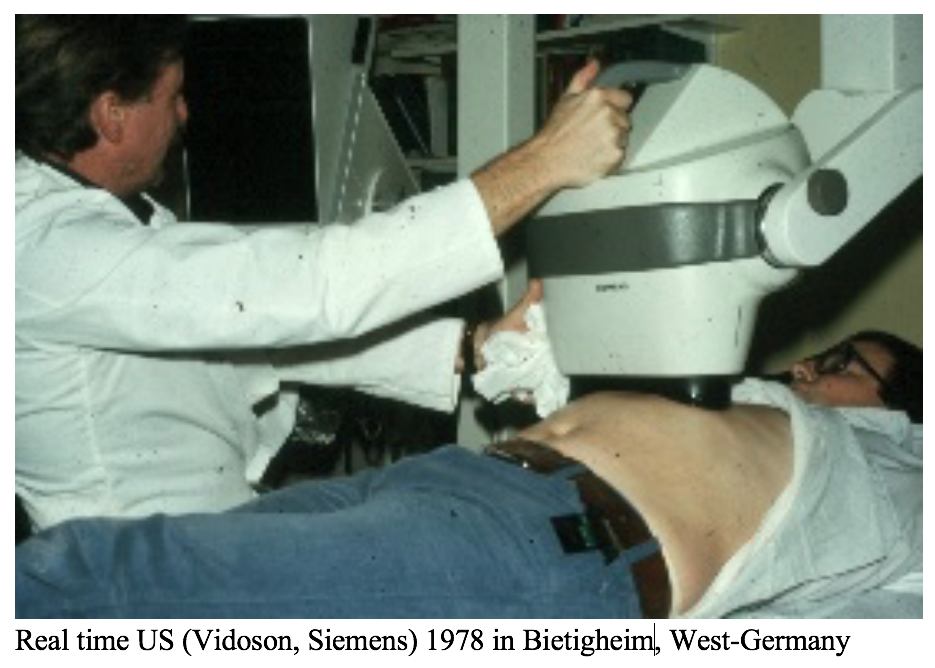 Q: How and when did you become involved in ultrasound?
Q: How and when did you become involved in ultrasound?
I heard about diagnostic A-scan ultrasound in ophthalmology as a medical student in Bonn, West-Germany in 1969. As a resident in neurosurgery in Oslo, Norway in 1971, I learned to use A-scan to examine possible brain displacement after head injuries. In 1976 I came back to my home town Bergen, Norway and Haukeland University Hospital to finish my specialities in Internal medicine and Gastroenterology. My colleague Ole Martin Pedersen at the Department of Clinical Physiology had access to a compound scanner, and we started scanning abdominal organs. At this time we were supported and stimulated by the head of Department of Medicine, professor Jarle Ofstad who saw the potential of ultrasound. However, I needed ultrasound education and in Germany some internists were pioneers in abdominal ultrasound. I got a job as resident and later head of the US lab in the hospital in Bietigheim, Academic Hospital of the University of Heidelberg, where I spent 3 years before going back to Bergen again in 1981. In the years to come I focused on including ultrasound as a clinical tool in Gastroenterology, close to the patient and at the same level as endoscopy. This was hard work, convincing colleagues to go into this field was not easy. However, slowly there was an increased interest for US among gastroenterologists especially when my friend and coworker Trygve Hausken published his studies and phd thesis about using US to study gastric motility and emptying. In 1987 we could start the Scandinavian EUS era, and our group arranged courses and education programmes, and US was also included as education for students in medical school.
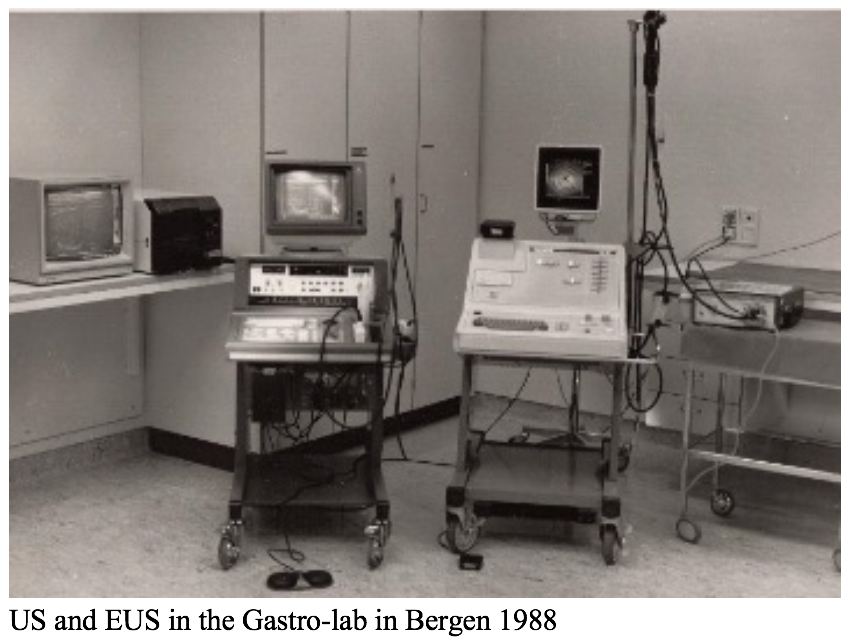 Q: Where there any particular people that influenced your work?
Q: Where there any particular people that influenced your work?
Professor Jarle Ofstad, Dr. Ole Martin Pedersen and professor Henning Schjönsby in Bergen were in the early years, but also later, important for my work. Dr. Ofstad who was a nephrologist stimulated the use of US in his field, and this became important for the later worldwide known national nephrology register founded and headed by Bjarne M. Iversen and Einar Svarstad. Professor Dieter Busch, Director of Department of Medicine and Gastroenterology in Bietigheim gave me the possibility to work with him and supported me to participate in ultrasound activities in West-Germany. At that time I visited endoscopy and ultrasound courses and training programmes in the departments of internal medicine and gastroenterology by professor Demling in Erlangen and professor Rettenmaier in Böblingen. I met Harald Lutz, Erlangen and Bayreuth and Karlheinz Seitz, Böblingen and Sigmaringen. Both of them and their ultrasound colleagues have in many years been of great inspiration for my further ultrasound work.
In 1988 I was invited to the University of Washington, Seattle as a visiting scholer in the gastrointestinal ultrasound research group headed by Michael B. Kimmey, Fred E. Silverstein and Roy W. Martin. I did a lot of basic research to better understand high-frequency images of the gastrointestinal wall. I had clinical experience with EUS, thus I contributed in establishing clinical EUS in Seattle and other places in the US. Altogether, I visited Seattle several times, and I had the pleasure to include some of my junior partners in this transatlantic program. Furthermore, the surgeon Dr. Alan H. Cheung became a close coworker in basic ultrasound research in Seattle. Later he became professor of surgery in Honolulu, Hawaii, and I had the pleasure to stay as a visiting professor in his department in the mid-nineties.
 Q: What were your career highlights?
Q: What were your career highlights?
In my opinion there are several highlights in my ultrasound life. After years as the only gastroenterologist in Norway doing ultrasound, it was a pleasure to see that ultrasound was increasingly accepted and used in gastroenterology both clinically and in research. In 2001, when I was director of Department of Medicine in Bergen, the Division of Gastroenterology was appointed a national centre for ultrasound in gastroenterology. This became possible with the help of younger enthusiastic and dedicated colleagues who today are professors and leading international experts in ultrasound. Key persons are Trygve Hausken, Odd Helge Gilja and Lars Birger Nesje.
Already in 1987 we started using endoscopic ultrasound (EUS) and were the first in Scandinavia in this field. This activity became possible due to our combined activities and training in both endoscopy and ultrasound. In this field Lars Birger Nesje and Roald Havre were key persons in both clinical and scientific EUS work. Both wrote EUS doctoral thesis. In the years to come 22 thesis and over 350 papers using a wide range of ultrasound modalities were published. Main research fields included real-time ultrasound to study gastrointestinal motility, 3D-US, EUS, image processing, software development, interventional US, CEUS, elastography, sonoporation e.g.
I was president and later honorary member of The Norwegian Ultrasound Society and had also the great pleasure to become an honorary member of the German Ultrasound Society (DEGUM) and to be honoured by the Norwegian King for my ultrasound work in 2013. Being an AIUM senior member and member of The European Research Council were also very stimulating activities. For some years I was a faculty member of EFSUMB, and in 2016 I was appointed an EFSUMB fellow at the EUROSON 2016 in Leipzig. This was a special experience and honour which was awarded to me by the president of EFSUMB (later also chairman of the education and publication committee in WFUMB) professor Odd Helge Gilja. He was my successor as leader of “National Centre for Ultrasound in Gastroenterology” in Bergen and coworker since many years.
In Norway we had experts in various ultrasound fields and NFUD was an active platform for sharing knowledge. The technical university in Trondheim, Christian Michelsen Research (CMR) in Bergen and Vingmed Sound in Horten were crucial partners in developing suitable ultrasound solutions also for gastroenterologists. In 1979 I wrote a letter in the Norwegian medical journal with the title “Ultrasound for everybody” which was regarded by several colleagues as a joke. I also submitted papers to journals in gastroenterology but received the answer that ultrasound was of less interest.
Q: What are your impressions of the ultrasound technology available today?
The development of US-technology has been amazing. Already in 1977 I saw the potential of using real-time US as a clinical tool. I used US as an extension of the clinical examination of patients, and when US-machines became smaller, we had US available in the GI-lab, in outpatient clinics e.g. Today US equipment is pocket sized, which has opened a new era in clinical medicine. I love this evolution. Furhermore, combining US and endoscopy using both dedicated echoendoscopes and miniprobes, the progress in interventional and therapeutic EUS, high-frequency probes, contrast-enhanced US, elastography, sonoporation, nanotechnology, haptic imaging, functional and motility US; it is a dream.
Q: What are your impressions of the ultrasound technology available today?
I follow new and updated US-activities, read journals and papers, support some phd-candidates and write review papers and book chapters. I am excited to hear that EUROSON 2020 will take place in my home town Bergen. I hope to experience this event which also has a strong local faculty headed by Odd Helge Gilja and several eminent US-people. I have been invited to chair a session about history of ultrasound, thus three former EFSUMB-presidents, Harald Lutz (also former WFUMB-president), Luigi Bolondi and Sturla H. Eik-Nes have accepted to give lectures.
This will be great if life takes care of us.
